Today is the day proposals are due for NSF Plant Genome. Well organized scientists submitted their proposals back on Friday, before memorial day weekend. Scientists like me worked through the weekend and pulled a couple of late nights, to finish up the proposal on the day of submission.
But this isn’t a story about grant writing. This is a story of feeling tired and burned out, waiting for people who are proofing said grant before we hit the final “submit button” and wandering down to my greenhouse to check on my plants. And there I discovered our mini-maize plants*, already silking and with the very first anthers starting to emerge in the tassel! These plants were planted on April 24th and as I write this, it is the 27th. That is a time to flowering even the very fastest millet species we work with (japanese and proso) would be hard pressed to match!
Now I could decide to be upset that we didn’t catch it in time to put a shootbag over the emerging silks, but instead this tiny little plant just makes me very happy. For anyone else growing this variety, be aware that the ears really sneak up on you (in this plant the ear shoot never made it past the leaf ligule, it looks like just a bunch of silks). Honestly I’m not sure HOW we’re going to shootbag these plants in the future. We may just have to grow them in greenhouses without any other corn (which is actually reasonably feasible here, there is a lot of dedicated space for sorghum).
*The mini-maize pictured here comes from seed provided by Morgan McCaw, a member of Jim Birchler’s group at Mizzou. For a detailed descriptions of its genetic history see his abstract “Fast-Flowering Mini-Maize: Seed to Seed in 60 Days Update” from the 2015 Maize Genetics conference.
Editor’s note: if you’re curious, here’s an update from a month later at the end of the mini-maize lifecycle.
Now, here have some more mini-maize photos:
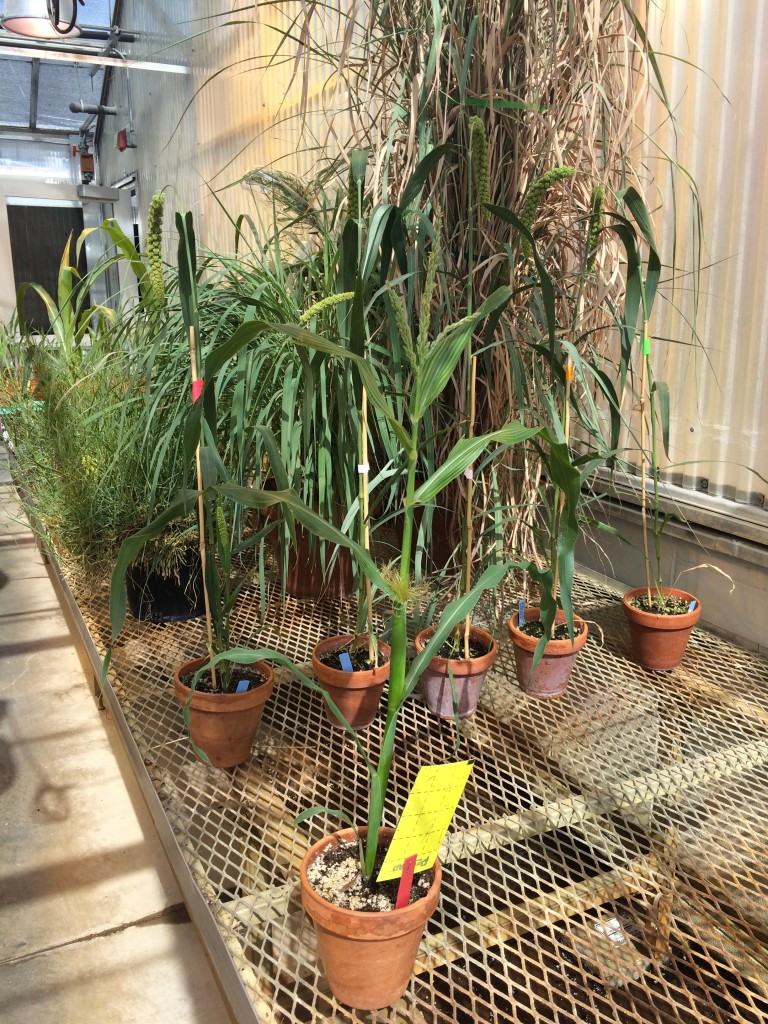
Minimaize in foreground with mature foxtail millet (Setaria italica) for scale. I didn’t have any more normal maize accessions growing in the greenhouse at the same time.
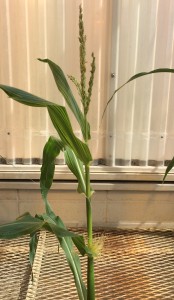
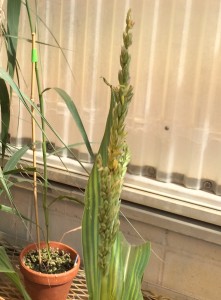
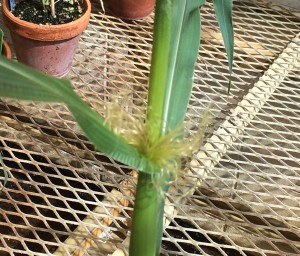
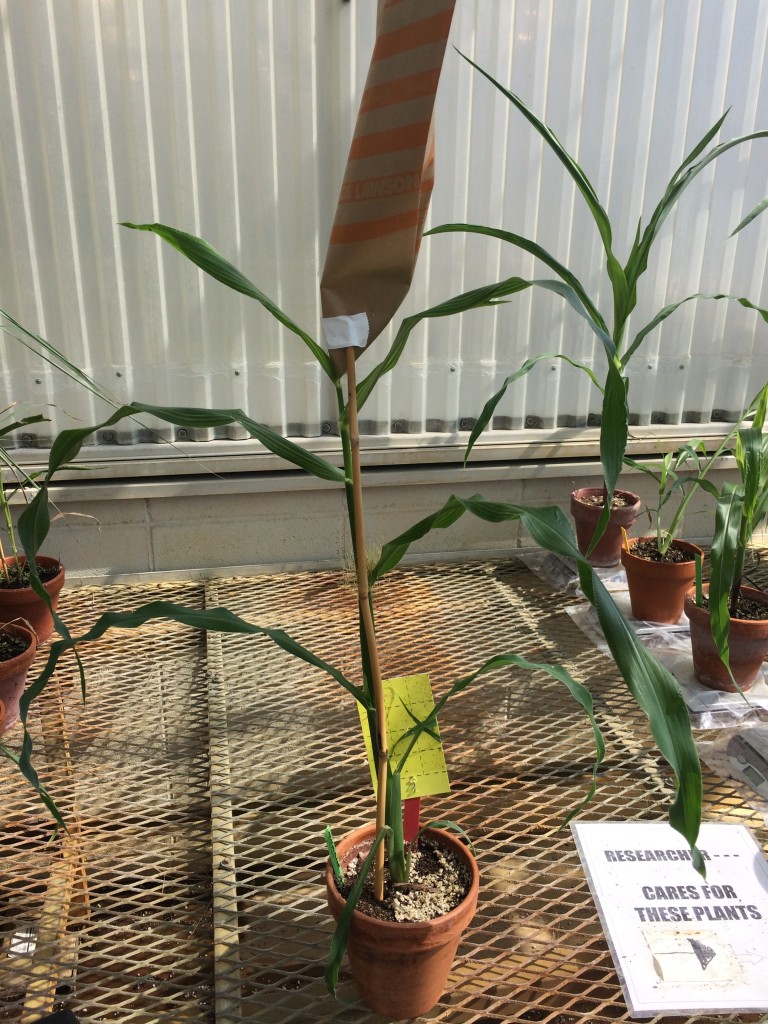
Hmm, we specifically selected against that, though it does happen occasionally. On the occasions when this happens to me I rip that ear out and pollinate the second ear. It should still nick with that second ear. The tassel branches are also angled very upright compared to what I usually see in our greenhouse. I have had reports of these “sneaky silks” from another lab, but they also had delayed flowering and I think we figured out that their troubles were caused by crowding with normal sized plants that shaded the minimaize.
If you cut the tassel bag in half the plant can support it, I cut the shoot bags in half as well because the full size ones tend to tip over and fall off as the flag leaves emerge. The apical ear will generally come out of the node of the 4th or 5th leaf from the top. I gently pull the leaf away from the stalk to peer down into the node to see where to expect the ear. When they are close to flowering you have to check them every day, sometimes you only get a days warning from the flag leaves that there’s an ear there.
If you have any questions about the minimaize feel free to email me. I am planning on making a video about minimaize care at some point. We are already making a few youtube videos as condition of our NSF grant, so it shouldn’t be too hard to throw in an extra.
Comment by Morgan McCaw — June 30, 2015 @ 11:29 pm
Hi Morgan, thanks for the reply and please accept my apologies, I didn’t see it waiting in the queue for approval before the holiday weekend. We tried to give the minimaize plenty of space, but they would have been shaded first thing in the morning and last thing in the evening by taller plants on either side of them, so if this is a phytochrome mediated shade avoidance response (ie triggered by red/far red light ratios rather than simple lack of sufficient light) these plants definitely would have felt shaded, we can take that into account in propagating our next generation.
We’re definitely big fans so far and have some plans to use both minimaize in high throughput phenotyping, but even with the rapid generation time it’s going to take us a while to bulk up our seed stocks from the original stocks you gave me at the maize meeting, so we’d certainly benefit any tips on how to maximize yield in each generation.
Comment by James — July 8, 2015 @ 11:24 am